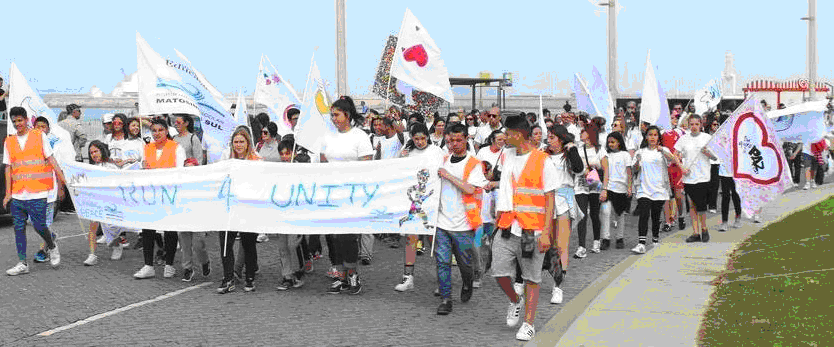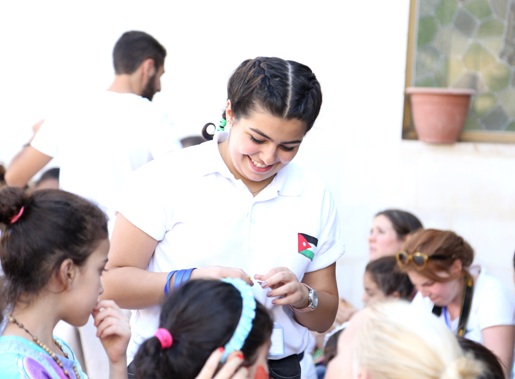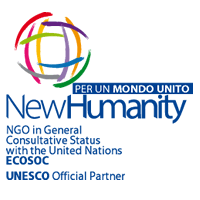We believe in the affirmation of the culture of peace,
the only one that can respect and respond to the real and deep questions of each and everyone, in the arduous journey towards universal fraternity.
Education for peace
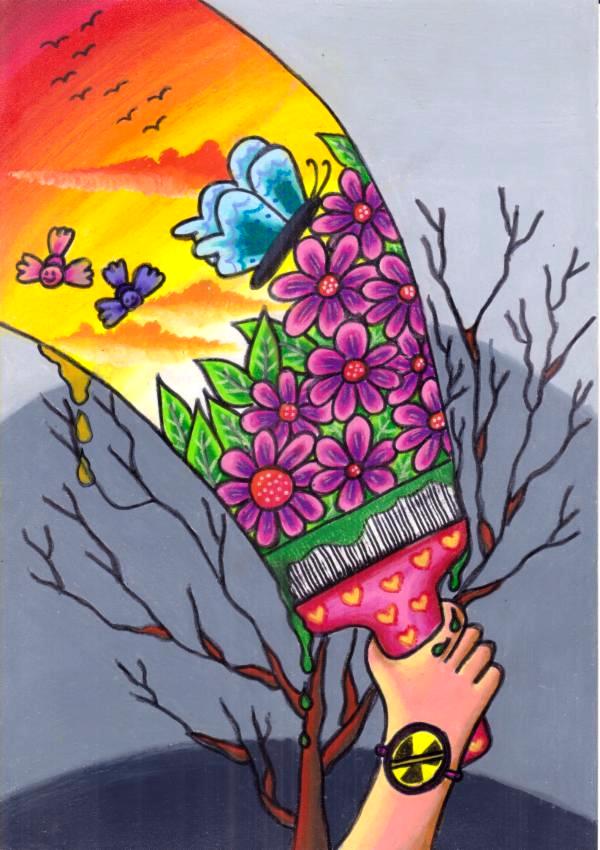 What does education for peace mean?
What does education for peace mean?
It should not be considered as an additional discipline, but rather as an instrument to transform every formative field in a path of peace. A path where children's creativity and autonomy are developed to address their problems, learning how to dialogue and experiment, in order to increase their awareness of their own resources and responsibilities as don Milani said.
Educating for peace, therefore, is promoting practical actions within a specific context, starting from interpersonal relationships without overlooking, more general issues such as the development model, resource distribution, and power management. It is important to make concrete actions to transform a globalised society starting from the bottom up, where lack of rights and inequalities often make the word "peace" meaningless.
Why education for peace?
“Since wars begin in the minds of men, it is in the minds of men that the defences of peace must be constructed.”(Unesco Constitution)
This quotation would be enough to understand the extreme importance that education for peace should have in the learning processes of every inhabitant of the Earth.
T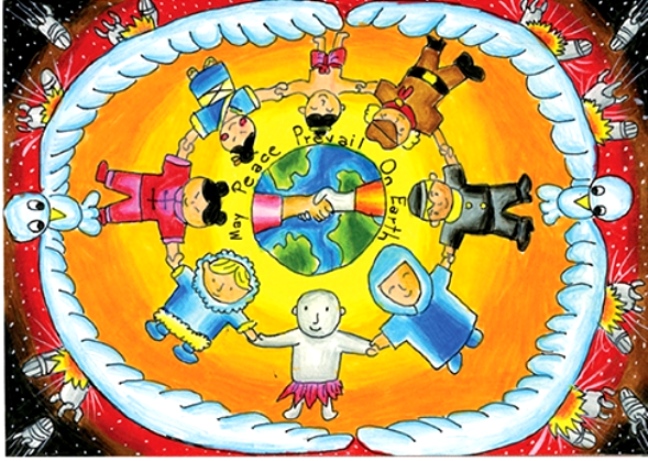 herefore, the Universal Declaration on the Human Right to Peace, which was approved in 2016 by the United Nations General Assembly, is extremely timely and important; a document in which, for the first time, it is established that all human beings have the right to enjoy peace. It also recognises that peace is not just lack of war, but a fundamental human right that requires "a positive and dynamic participatory process in which dialogue is encouraged and conflicts are resolved in a spirit of mutual understanding and cooperation" (A/C.3/71/L.29, Preamble). Of the five articles of the Declaration, the fourth is devoted to peace education in order to "strengthen the spirit of tolerance, dialogue, cooperation and solidarity among all human beings".
herefore, the Universal Declaration on the Human Right to Peace, which was approved in 2016 by the United Nations General Assembly, is extremely timely and important; a document in which, for the first time, it is established that all human beings have the right to enjoy peace. It also recognises that peace is not just lack of war, but a fundamental human right that requires "a positive and dynamic participatory process in which dialogue is encouraged and conflicts are resolved in a spirit of mutual understanding and cooperation" (A/C.3/71/L.29, Preamble). Of the five articles of the Declaration, the fourth is devoted to peace education in order to "strengthen the spirit of tolerance, dialogue, cooperation and solidarity among all human beings".
Living Peace International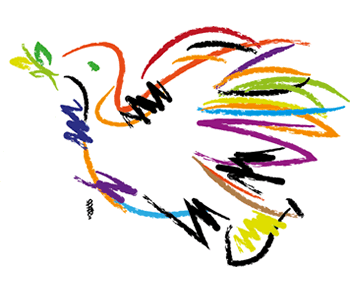
The Living Peace International Project is a path to peace education.
It is based on the “Dice of Peace” ![]() on whose faces there are no numbers but sentences that help build peaceful relationships among everybody. It is inspired by the main points of “The Art of Love”, that Chiara Lubich proposed many years ago to the children of the Focolare Movement using a dice game.
on whose faces there are no numbers but sentences that help build peaceful relationships among everybody. It is inspired by the main points of “The Art of Love”, that Chiara Lubich proposed many years ago to the children of the Focolare Movement using a dice game.
Together with the dice she also proposed the![]() “Time out”: at noon every day we have a moment of silence, reflection, or prayer for peace.
“Time out”: at noon every day we have a moment of silence, reflection, or prayer for peace.
As of today, there are more than 1,700 schools and groups that adhere to this project and more than 1 million children, young people and adults involved in these initiatives in the five continents.
The project aims to strengthen the collaboration and to cooperate with many people in the world to build a “net” of peace that wraps the Earth. As a consequence, Living Peace is also a platform: there are more than 80 international organisations that operate in synergy with this project and share peace initiatives proposed by the respective nets.

Goal
Living Peace International aims at improving everyone’s commitment to live in peace and for peace in every context, including education.
Specific Goals
- Develop affective pedagogical practices we can export to different places and contexts
- Improve active citizenship and democracy through intercultural and peace education
- Increase awareness of people’s rights and duties
- Develop respect for each other's differences and intercultural dialog
- Improve teamwork and our abilities to plan and act together
- Foster creativity and improve learning abilities
- Improve relationships among teachers and students, and motivate individuals to engage in prosocial behaviour
Beneficiaries
The main beneficiaries of our project are schools and youth groups, but other entities may benefit from it, such as parishes, art groups, charities, and others, regardless of their location, culture and religion.
6x1 Methodology
6x1- Six steps towards a goal: a proposal from the Teens for Unity movement that stems from Service Learning methodologies and aims to help youth groups to plan effective and inclusive peace actions.
The 6x1 Methodology enhances our ability to look at our own social context and actively improve it in six steps: observe, think, involve, act, appreciate, and celebrate.
The Dice of Peace
Living Peace International is a project based on a game, the “Dice of Peace” on whose faces there are no numbers but sentences that help build peaceful relationships among everybody. It is inspired by the main points of “The Art of Love”, that Chiara Lubich proposed many years ago to the children of the Focolare Movement using a dice game.

- I am the first to love
- I love everybody
- I love the other person
- I listen to the other person
- We forgive one another
- We love each other
Every context in which the game is played is unique and different, so are the players’ culture, religion and age. The die can be modified and personalised as long as it concretely encourages peace.
“The dice may be considered a recreational, didactic and educational proposal (…) intended for everybody: families, schools, and all kind of groups. The main goal is to stimulate positive relationships in every context in which the dice are used, enhancing children’s prosocial abilities and strengthening those of the adults.” (Le origini e la storia del dado e dell’arte di amare - Josep M.C.I. Arxer)
This game is considered a pedagogic entertainment technique, useful to develop everybody’s potentialities and promote cooperative learning contexts based on knowledge sharing and co-building.” (La pedagogia del dado - Teresa Boi)
Usually, we roll the die every morning or whenever possible: every one, child or adult, is committed to actively put into practice the sentence. The kids and educators involved are then invited to share their peace building experiences once a week or when it is feasible. For example, they can share them on a Diary of Peace, or on a Mural of Testimonies glued onto a wall in schools or associations; of course, there is no limit to creativity.
Experiences, videos, and pictures of these activities that are sent to the Living Peace international coordination centre will be shared among all those involved with the project through our website, Facebook page and YouTube channel.
Dice of Peace: use experiences
Other dice versions:
1. Intereligious dice of peace
2. Childhood dice for peace
3. Youth dice for peace
Approfondimenti
The beginnings and the history of the Cube and the Art of Loving - Joseph M. C. J. Arxer
Dice as pedagogic devices - Teresa Boi
Time Out
A Moment for Peace
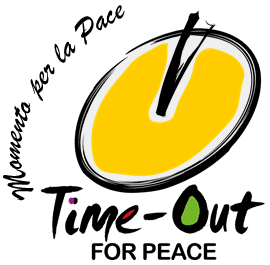
Created as an answer to never-ending wars and conflicts, and widespread violence and injustice, the “Time-out” wants to weave a thick net of peace around the world, a net with thousands of knots made of people who stop for a minute's silence or a minute's prayer or to meditate on peace every day at 12.00 (noon) in every time zone.
First proposed by Chiara Lubich in 1991 during the Gulf War, this activity was born to create a human chain that links the whole world together.
A Proposal:
United with thousands of kids, youth and adults in every Country of the world, we ask for peace in every nation on Earth especially for… (mention here the Countries at war), and wherever violence and injustice reign.
We strive to make the Golden Rule our own: "Do to others what you would want them to do to you" to bring peace wherever we live and build a united world.
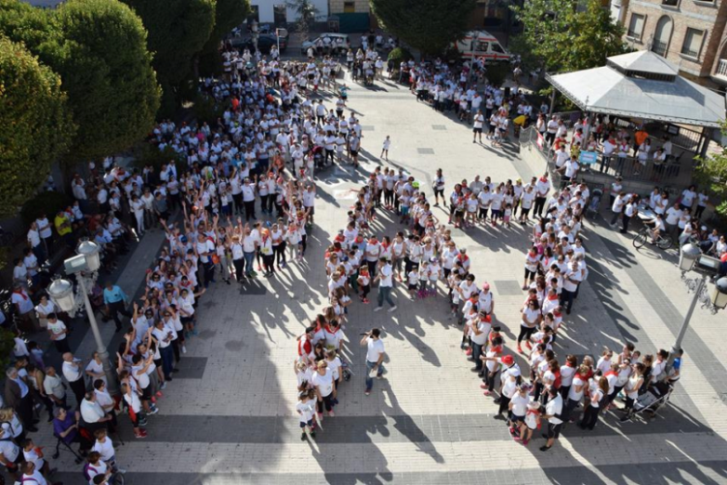
Golden Rule
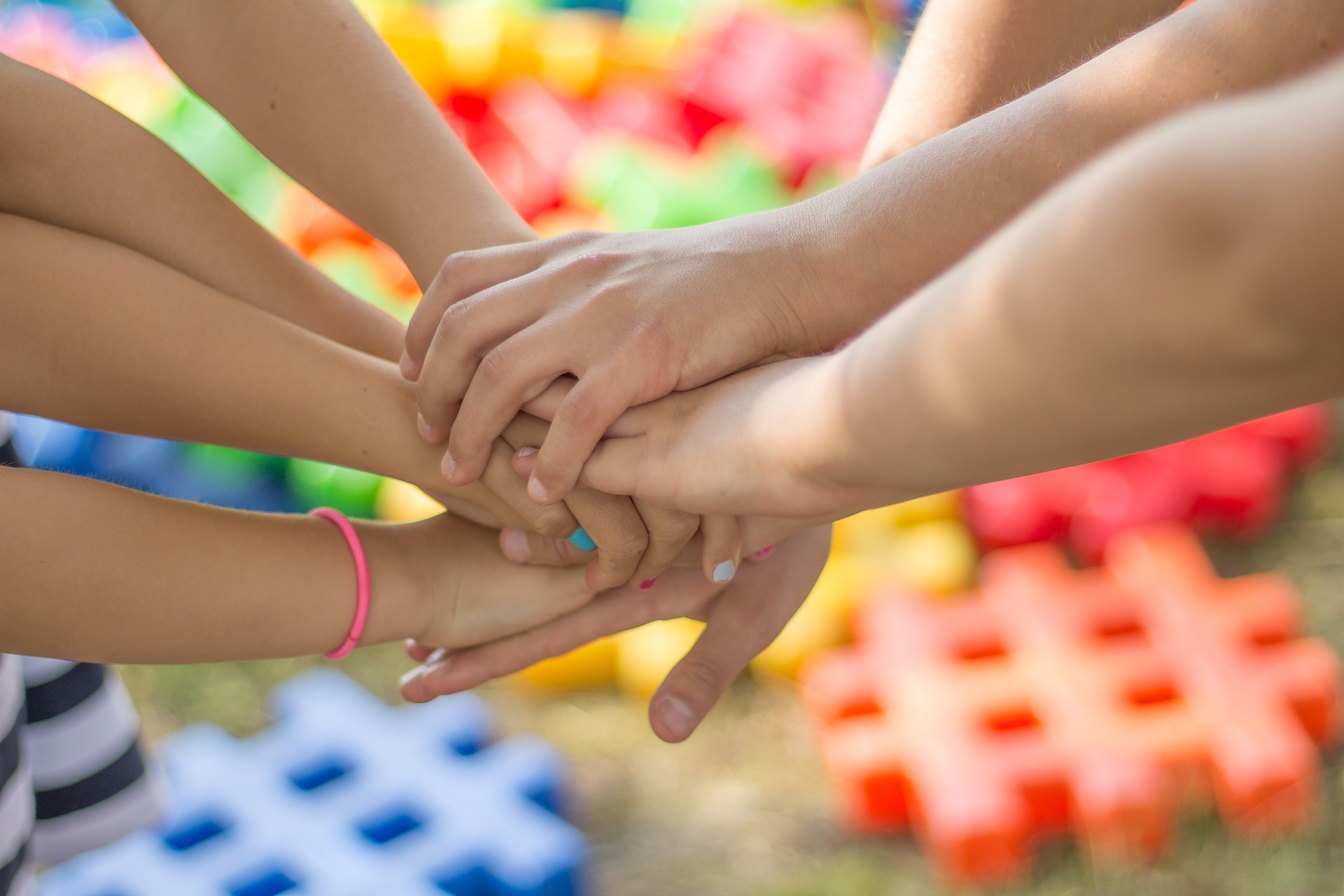 A mosaic located at the entrance of the United Nations Secretariat Building in New York depicts people of different nationalities, religions, and cultures with the words: “Do unto others as you would have them do unto you”, the so called Golden Rule, inscribed on its surface.
A mosaic located at the entrance of the United Nations Secretariat Building in New York depicts people of different nationalities, religions, and cultures with the words: “Do unto others as you would have them do unto you”, the so called Golden Rule, inscribed on its surface.
But what exactly is the Golden Rule? It is a unique law because “it expresses a formidable intuition that is accessible to human knowledge and conscience”[1], in that is part of all the main religions and schools of thought of the world. As a consequence it can also be described as the core of universal ethical codes. According to recent studies, it was mentioned as early as 3,000 BC in the vedic Indian tradition: “Don't do unto others what you don't want done unto you; wish for others what you wish for yourself”[2].
Among the oldest golden rule quotes we can find those from the philosopher Confucius, who lived in China between the sixth and fifth century BC.
As for Judaism, we can read the Golden Rule for the first time in the Book of Tobias, dated 200 BC, but Jesus Christ has turned it into a positive sentence: “Do unto others as you would have them do unto you”.[3]
During the Middle Ages, the rule was included in the Rule of Saint Benedict[4] and in the Regola non bollata of Saint Francis of Assisi[5].
Golden Rule in religion and culture
We have already mentioned that one of the more interesting characteristics of the Golden rule is that it can be found inside all the main religions, schools of though, and philosophies everywhere in the world and in all time periods. We want to mention a few in alphabetical order.
Baha’ì: “Blessed is who prefers his brother to himself” (Bahà’u’llàh tablets – 19th century).
Buddhism: “Whatever is disagreeable to yourself, do not do unto others” (The Buddha, Udana-Varga 5.18 – 6th century BC).
Confucianism: “Do not do to others what you do not want them to do to you” (Confucius, Analects 15.23 – 5th century BC).
Christianity: “You shall love your neighbour as yourself. On these two commandments depend all the Law and the Prophets.” (Gospel of Matthew 22, 36-40 – 1st century CE).
Judaism: “What is hateful to you, do not do to your fellow-man. This is the entire Law, all the rest is commentary” (Talmud, Shabbat 3id – 16th century BC).
Gandhi: “To see the universal and all-pervading Spirit of Truth face to face, one must be able to love the meanest of all creation as oneself” (translated from: Il mio credo, il mio pensiero, Newton Compton, Rome 1992, page 70 – 20th century).
Jainism: “In happiness and sorrow, in joy and in pain, we should consider every creature as we consider ourselves” (Mahavira, 24th Tirthankara – 6th century BC).
Judaism: “Never do to anyone else anything that you would not want someone to do to you” (Tobias 4, 15 – 3rd century BC).
Hinduism: “This is the sum of duty. Do not unto others that which would cause you pain if done to you” (Mahabharata 5, 1517 – 15th century BC).
Islam: “None of you will believe until you love for your brother what you love for yourself” (Hadith 13, The Forty Hadith of Imam Nawawi – 7th century).
Native Americans: “Respect for every form of life is the foundation”(The Big Law of Peace– 16th century).
Plato: “I can do to others what I’d like them to do to me” (5th century BC).
Yoruba wise saying (West Africa): “If somebody stings a bird with a sharp stick, should be first try it on himself and realise how badly it hurts”.
Seneca: “Treat your inferiors as you would be treated by your betters” (Letter 47 11 – 1st century).
Shintoism: “Be charitable to all beings, love is the representation of God” (approximately 500 CE: Ko-ji-ki Hachiman Kasuga – 8th century BC)
Sikhism: “I am a stranger to no one, and no one is a stranger to me. Indeed, I am a friend to all” (Guru Granth Sahib, religious scripture of Sikhism, p. 1299 – 15th century).
Voltaire: “Put yourself in the other person's shoes” (Letters on the English, n.42).
Zoroastrianism: “Do not do to others what is harmful for yourself” (Shayast-na-Shayast 13, 29 – between 18 and 15 century BC).
The Golden Rule today
Come ricorda il filosofo Vigna, la regola d’oro “merita ai nostri tempi un’attenzione particolare, non è, in sé e per sé, una regola religiosa, ma una Regola “laica”.
Fetullah Gulen, sufi turco, ha fondato scuole e imprese in tutto il mondo nello spirito della regola d’oro.
Erich Fromm nel suo best-seller L’Arte di amare afferma: “Se io amassi veramente una persona, io amerei il mondo, amerei la vita.”[6]
Sorokin, sociologo russo, scrive: “Solo il potere dell’amore incondizionato provato per tutti gli esseri umani può sconfiggere le forze della lotta fratricida.”[7]
Chiara Lubich ha fatto della regola d’oro la regola fondante per costruire il “dialogo della vita”: “Bisogna spalancare il cuore, rompere tutti gli argini e mettersi in cuore la fratellanza universale! Se tutti siamo fratelli, dobbiamo amare tutti. Dobbiamo amare tutti. Sembra una parolina. È una rivoluzione.”[8]
In conclusione, allenandoci[9] insieme nei luoghi educativi e ovunque all’esercizio della regola d’oro, in continuità con le più antiche tradizioni culturali e religiose, potremo rispondere oggi alla necessità delle donne e degli uomini di ritrovarsi insieme in un percorso esistenziale nel quale la fraternità sia una scelta consapevole e condivisa.
____________________________________________
[1] T. Tatransky, Sul volume La Regola d’oro come etica universale, in , XXVIII (2006/5) 167, p.643.
[2] Mahabharata, Anusasana Parva 113.8.
[3] Cf. Lc 6, 31.
[4] La santa regola di san Benedetto, cap IV, v. 9.
[5] Regola non bollata (1221), cap. IV, v. 13.
[6] E. Fromm, L’arte di amare, Il Saggiatore, Milano 1978, p. 64.
[7] P.A. Sorokin, Il potere dell’amore, Città Nuova, Roma 2005, p.36.
[8] C. Lubich, L’arte di amare, Città Nuova, Roma 2005, p.30.
[9] “Applying properly the golden rule is basically a matter of competence: it is like serving in tennis” says Fanciullacci (T. Tatransky, in the book: La regola d’oro come etica universale, quote, p. 658).
One Methodology
 Six steps to a goal
Six steps to a goal
OBSERVE . THINK . INVOLVE .
ACT . REFLECT . CELEBRATE .
Peace may seem a distant and difficult ideal to reach and not being able to see quick results of our actions might be frustrating.
“6x1” is a proposal from the Teens for Unity movement that stems from Service Learning methodologies and aims to help youth groups to plan effective and inclusive peace actions.
The whole group gradually develops a “vision” for working together in their town or district, enabling them to identify the real needs of the area where they live and to focus on what could be their specific contribution.

Run4Unity - relay race for unity - is an annual activity that takes place in hundreds of cities in the 5 continents, organised by Teens for Unity, one of the Living Peace promoters.
Hundreds of thousands of boys and girls of different cultures and religions run together to show their commitment to peace and promote an instrument to achieve it: the Golden Rule. The first Sunday of May from 11 a.m. until 12 a.m. in each time zone they organized sports, social and artistic activities, involving not only their peers, but also young people and adults, to extend symbolically a rainbow of peace on the whole planet.
Living Peace schools and groups are invited to participate and to be protagonists in this global relay of peace that unites the most distant points of the planet.
For more information and to register: www.run4unity.net
Milonga
Thousands of non-governmental organizations in action.
Milonga is a volunteering platform.
The youth of Living Peace, between 21 and 35 years, are invited to adhere to the high-quality opportunities that Milonga provides: “fraternal” and intercultural volunteering whose work will strengthen the impact of the NGOs on the ground.
It is voluntary service with mentorship before during and afterwards.
The spirit of fraternity is also what drives the encounters with communities in precarious situations, bringing about an experience of communion and intercultural dialogue.
Currently, these projects are present mainly in Latin America, but others from around the world are integrating into the platform.
For further information, just click www.milongaproject.org
If you wish to undertake a volunteering experience, access the link: http://www.milongaproject.org/en/join-now/
Peace Calendar
Peace action proposals in collaboration with our partnerse
The following activities may help you develop peace wherever you live.
What are you waiting for? Choose one, you can make a lasting difference here.
#DareToCare – dare to care
We promote active citizenship
Educating for peace also means promoting concrete actions to transform a globalized society from below, where the lack of rights and the striking inequalities often make the mere pronouncement of the word “peace” meaningless. We therefore emphasize the aspect of care intended as taking charge, taking care of others, the planet, society, institutions from a young age. Living Peace thus invites you to embark on a path of active citizenship with the classes or groups, enriching the educational / training path and enhancing the 6x1 method - six steps for one goal.
International Day of Peace
International Peace Day is celebrated on 21 September. This date was decided in 2001 with Resolution 55/282: for the occasion the United Nations invited all countries to cease hostilities and to promote educational actions that raise awareness and promote peace.
School Day of Peace and Non-violence
A day recognized by UNESCO in 1993. The anniversary is January 30th and wishes to draw the attention of politicians, parents and educators to the need for continuous training in non-violence and peace; it is necessary to educate to solidarity and respect for others “since wars begin in the minds of men, it is in the minds of men that the defenses of peace must be built” (UNESCO Constitution, 1945). It can be an opportunity to publicly demonstrate one’s path / commitment undertaken for Peace.
In Time for Peace
«To prevent war from being the law between people and peoples, let’s be peacemakers from now on.» Certificate of Commitment
Living Peace invites you to take a challenge:
1. Peace starts with me
2. Peace and the others
3. Peace and the local community/the world
Golden Rule
A little, tiny rule would be enough to change the world: “Do unto others as you would have them do unto you and don't do unto others what you don't want done unto you!” It’s so important and valuable that it has been named the Golden Rule.
What about living it at school or in our youth groups?
Teddy Bear Hugs
This activity, proposed together with the Children of the Earth association, allows children to donate their own teddy bear and a message of peace to a refugee child, an orphan, or a kid who is going through a difficult moment.
Peace Crane Project
Kids between 6 and 14 are invited to create “origami peace cranes” with kids from other schools or groups, and exchange their creations with each other.
This simple sign will help us to open our hearts and feel unity.
The Tree of Peace
In collaboration with Mil Milenios de Paz, we offer an activity based on the tree of life, helping to think about the deep meaning of peace and its values.
Peace Flags Exchange
This activity is based on designing “flags of peace” in small groups. Each group can choose a Country where a Living Peace school or association is based and then send them the flag they had created.
Elephants for Peace
Elephants symbolise a sign of peace that combines strength and peace.
With this activity, in collaboration with Elephants for Peace, we encourage everybody to be creative and design an elephant representing peace.
Mandalas of Peace
Drawing mandalas encourages creative thinking and conflict resolution strategies.
Together with Mimos para tus Ojos we offer an opportunity to design mandalas, working in groups or individually: the underlying idea is to Create for Others.
Certificate of Commitment
The Certificate of Commitment is both a document and an instrument we can all use to offer our personal contribution to achieving goal number two (Zero Hunger) of the17 Sustainable Development Goals adopted by the UN General Assembly. The goals are to be achieved within 2030.
Sport4Peace
Sportmeet promotes this peace education activity in collaboration with Living Peace International.
The project is grounded on an attitude of fair play, communication and interaction: mutual respect, care for others, honesty in abiding by the rules of play, the ability to listen, apologize for faults, etc. This lifestyle in play and sport should be an impulse for an identical commitment in everyday life: to work for a peaceful co-operative society.
We would like to keep you updated about the following activities:
Peace Pals International – Art Context
This initiative is organised by Peace Pals International . Children and youth from all over the world are invited to submit their art creations to Peace Pals international Art Exhibition & Awards.
Every year they propose a new theme to stimulate the participants to portray values of peace.
Internazionale Esay Contest for Young People
This annual essay contest is an activity within the framework of the UNESCO Global Action Programme (GAP) on Education for Sustainable Development (ESD) and is organised by the Goi Peace Foundation in an effort to harness the energy, creativity and initiative of the world's youth in promoting a culture of peace and sustainable development.
Young Ambassadors of Peace
Young Ambassadors of Peace, nomination: children and youth, protagonists of specific actions of peace, are nominated to become ambassadors of peace, an important and demanding title.
In partnership with the Universal Circle of Ambassadors of Peace.
The child shall be protected from practices which may foster racial, religious and any other form of discrimination. She/He shall be brought up in a spirit of understanding, tolerance, friendship among peoples, peace and universal brotherhood, and in full consciousness that his energy and talents should be devoted to the service of his fellow men.
Principle 10
Declaration of the Rights of the Child - UNICEF 1959
Promoted by:
menu II
login staff
2016 Living Peace - International![]() This work is licensed under a Creative Commons License and it was made with Free Software released under the GNU/GPL License.
This work is licensed under a Creative Commons License and it was made with Free Software released under the GNU/GPL License.
Annette Löw: webmaster@livingpeaceinternational.org







